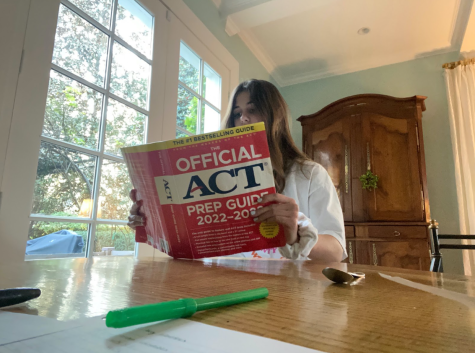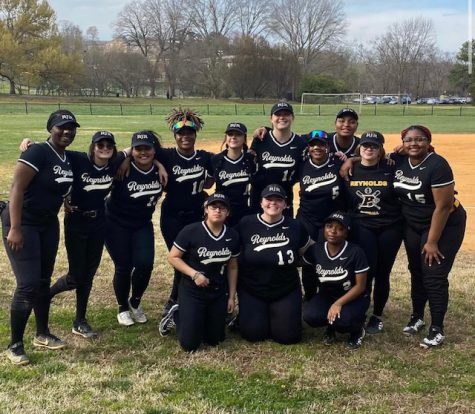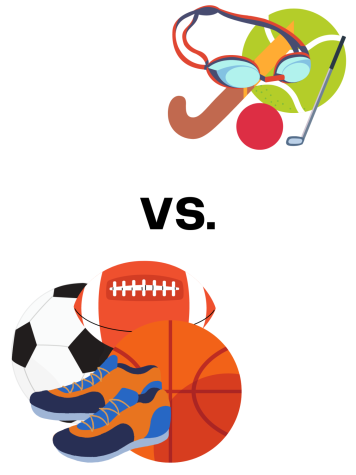Tale of the tied-up teachers
April 22, 2023
It doesn’t go unnoticed that most students don’t have enough energy for school. When you walk down the RJ Reynolds High School hallways, students’ heads are down with their hoods up as they stare at their phones, walking like zombies.
Spring burnout is brutal, and it’s hard to find a remedy. For many, the most detrimental part of school is the classes that make or break someone’s high school experience. While students are expected to be at peak performance 24/7, class periods feel like decades, and the students drown in awkward silence. Is it up to us to sway the energy of the class?
This year, the freshmen had an assembly meeting to announce that their class has a record failing rate, with the majority of the class having an F grade. Most believe this is because of the expedited jump from Elementary School to High School due to COVID. The jump from reading fifth-grade level books to taking AP or high school level classes can be rattling. Some students believe that teachers don’t understand the struggle and aren’t helping them work through it. Freshman Brooks Bossong is among the few freshman students taking an AP class. Bossong understands the freshman struggle and thinks teachers should help push them in the right direction.
“Freshmen are failing because they are used to being online and having extended due dates, but some students just need attention from a teacher or authority,” Bossong said. “[The teachers] don’t do anything, and they make it harder to work in class for other students.”
The most vital part of the class is the beginning; it’s the make or break for the rest of the class period. What are the ideal first five minutes of class? You walk in, are immediately greeted with a smile from the teacher, and sit down. Then the class is engaged in a fun activity. Some teachers do daily conversation warm-ups or attendance questions to set up the rest of the class for success, but what is it like when you’re welcomed into class with busy work and no verbal exchange with the teacher or students?
“Teachers rely on technology and websites too much, which can make class a waste of time,” Bossong said. “What’s the point of them even being there if they don’t interact with us? I feel less encouraged to come and do what they are assigned. Most of the time, their assignments can be completed within the first 20 minutes of class and will not benefit me in any way. It doesn’t help anyone learn, and I feel like I’m there to get a number and not to learn.”
Like Bossong, junior Mary Lowe Edmundson struggles to maintain motivation when it feels like the teacher doesn’t care. Edmundson is academically driven and is taking five AP classes, so every class matters. For Edmundson, whether or not the teacher is passionate about the curriculum sways the energy of the class period.
“I think that a teacher can really help motivate the students if the teacher is passionate and cares about what they are teaching,” Edmundson said. “A good mood influences a student the most. When a teacher complains a lot and doesn’t put in the effort as if they don’t care, then it reflects in the classroom too. I feel like students are willing to put in more effort if the teachers act like they… care about the lesson.”
While teachers have a big impact on student engagement, other factors like, mental health, sports, clubs, and a students home life also affect how much energy students have to give to school. For many students, the stress of school is alleviated when they walk into a classroom with a positive, energetic and excited teacher. Freshman Genevive Amigone has found most of her teachers to be encouraging and inspirational, helping her thrive as a student.
“For the most part, my teachers at Reynolds have been engaged,” Amigone said. “I think a lot of my teachers enjoy what they teach and enjoy being able to share a subject they are passionate about with their students.”
As a senior at RJR, I can agree with this statement. My teachers have been my role models as I’ve grown as a student and a member of the RJR community. However, I have faced struggles feeling unheard or slightly disrespected that have increased some of my classroom insecurity. Sometimes it feels shameful to ask multiple questions during a class period if you have been previously met with an eye roll the last time you did that. While Amigone enjoys most of her teachers, sometimes she feels discouraged in the classroom.
“It’s difficult to want to learn when you have teachers who don’t listen to you, try to shut you down, call you names, or manipulate your peers to think a certain way about you,” Amigone said. “In one instance, I was called a pretty rude nickname in front of my class because I was asking my teacher multiple questions, and no one else was asking questions. The teacher has said multiple times that the students who ask questions are successful, so it’s confusing why this teacher put me down for it. This is discouraging because it makes me not want to ask any more questions if this is the way my teacher was going to treat it.”
When students feel silenced in a classroom or embarrassed to get a better understanding of the curriculum, their academic drive begins to diminish.
“Teachers who put you down, compare students, and have expectations higher than what you are capable of achieving from what has been taught in the class can make you feel like a failure,” Amigone said. “If students are scared of asking more questions and wanting to learn, no one is going to improve.”
It’s understandable that students feel upset when teachers welcome us into a classroom with what feels like negative energy. As a student, it’s hard to understand the perspective of someone you feel doesn’t care about you, thinks about you as just another student, or just part of the job.
Civics and Economics teacher at Reynolds, Cristofer Wiley, believes that the teacher and the students are responsible for maintaining a good environment in the classroom. There are many variables that a teacher has to take into account for a successful class period.
“Every classroom is a kind of crucible; students and teachers are elements that bounce off of each other for ninety minutes at a time,” Wiley said. “Managing the classroom is a pretty delicate craft of directing everyone’s academic, emotional, and social energy like traffic.”
Like most teachers, Wiley faces the hardships of being a teacher that is not recognized by students. Teachers have to consider their students’ many perspectives when assigning classwork while also managing the energy of the class and keeping students on task.
“It’s worth acknowledging that people, students and teachers alike, bring their personalities, histories, energy, and whatever else has happened to them on a particular day into the classroom to determine everyone’s outcome,” Wiley said.
While Wiley is one of the many hardworking teachers at Reynolds, he still recognizes when students struggle with teachers.
“Teachers can, of course, be subject to the friction from students or to frustrations of their own, and that might leave students to navigate the day or the course alone,” Wiley said.
Ultimately, it is up to the students to participate in classwork, but teachers must support the students in the process. A teacher must support students in intangible ways, both emotionally and mentally. Being shut down or insulted by a teacher reshapes a student’s perspective of a classroom to be a place where students can’t be themselves. Teachers are accountable for paving the way to make school a place where students feel comfortable and inspired.













